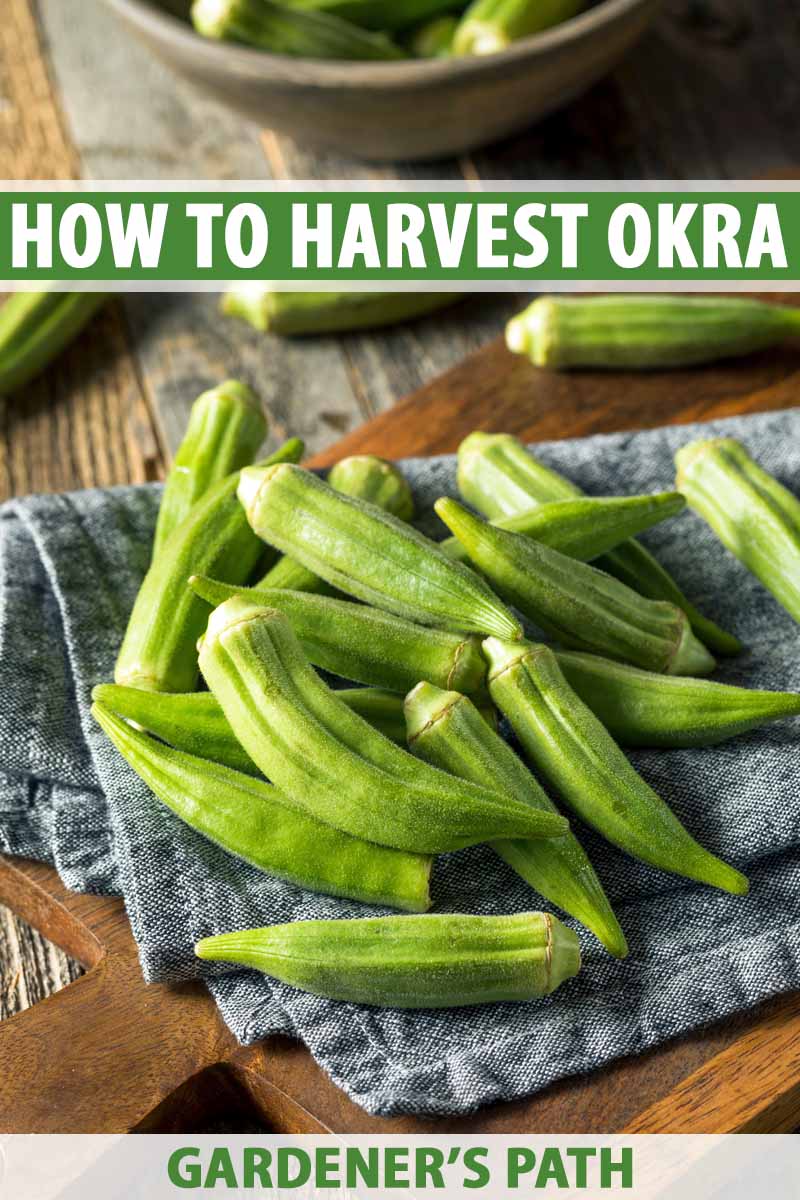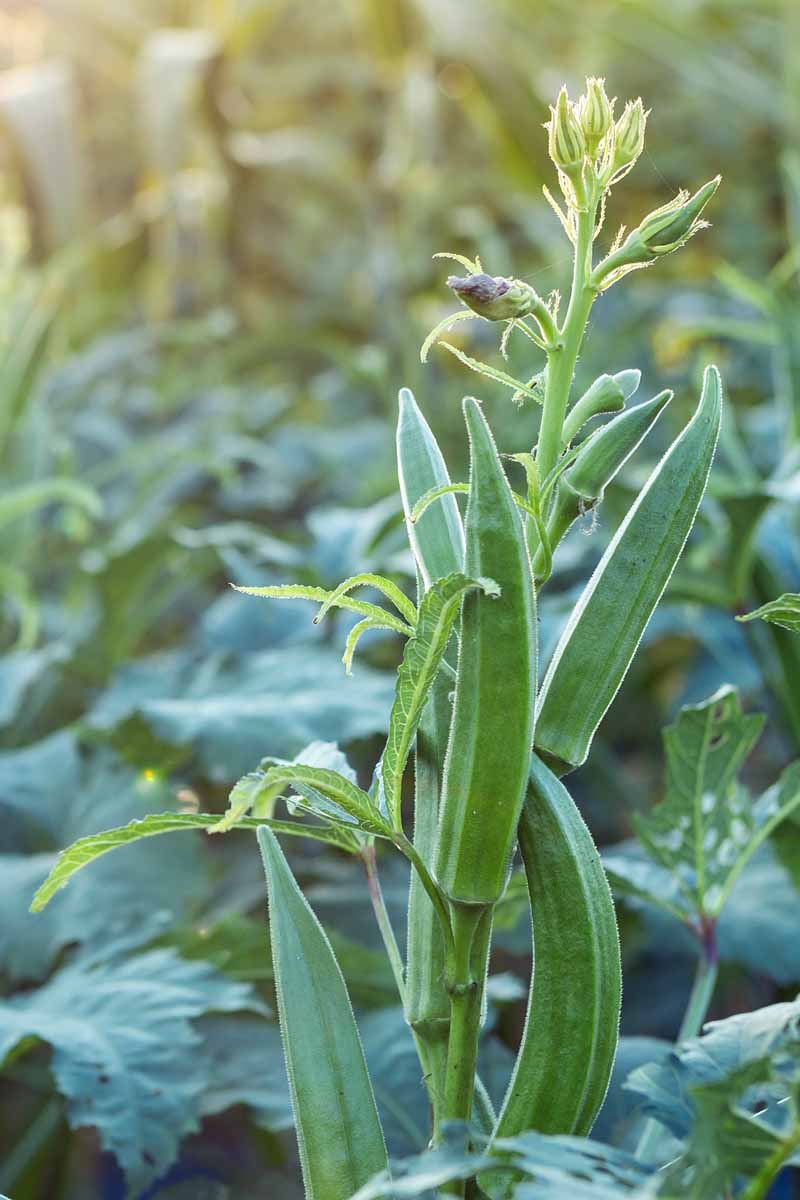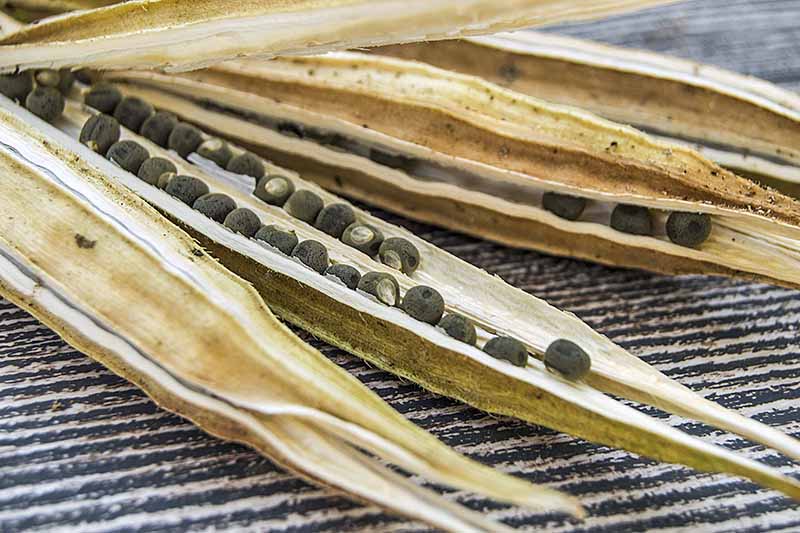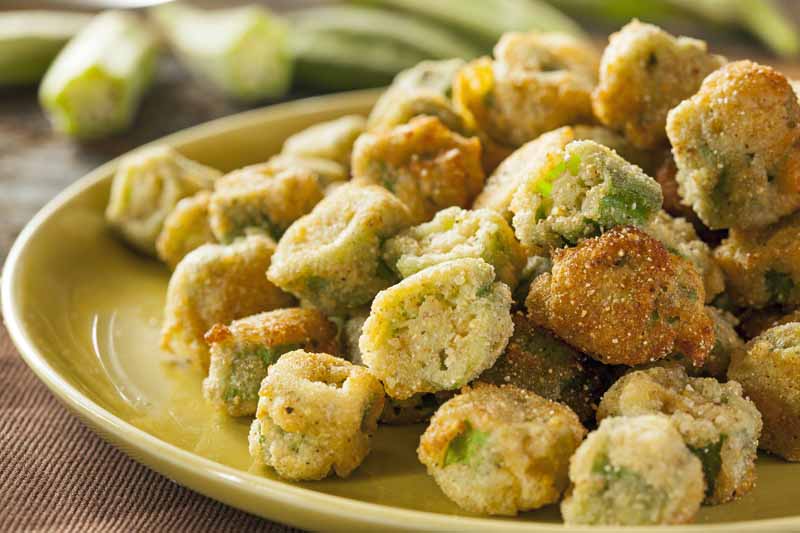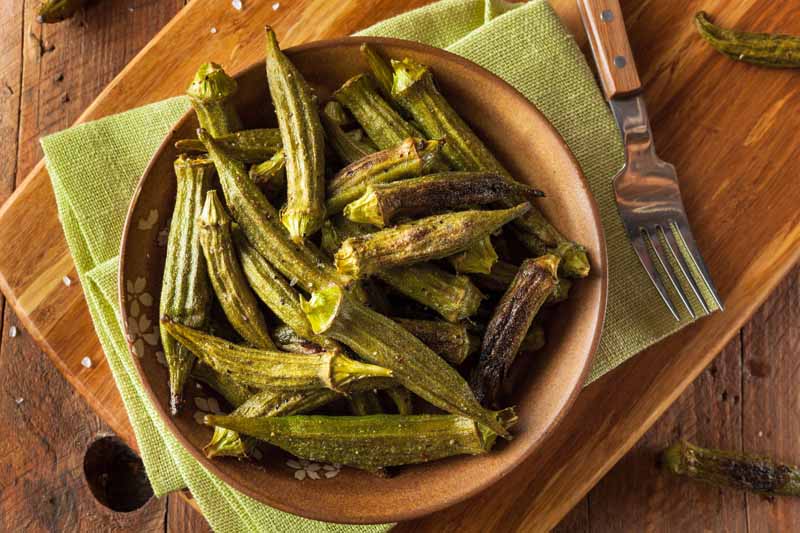We link to vendors to help you find relevant products. If you buy from one of our links, we may earn a commission.
Pod Formation
When your chosen varieties approach maturity, pods begin to form. And they often grow quickly, within a few days after flowering. Check on them daily, and when they reach about three inches in length, they should be at the peak of flavor and tenderness, ready to harvest. Some larger varieties may be able to hang around on the plant a little longer before they get tough.
Harvesting
Wear gloves and handle the pods as little as possible, to prevent softening before use and skin irritation. Even so-called “spineless” varieties may have some setulose growth, so don’t be surprised if you encounter these fine protrusions on pods, stems, and leaves.
If you find that they’re already woody when you pick at three inches, toss this harvest into a dish that’s going to be cooked low and slow, which may help to soften them a bit. Keep this knowledge in mind for your chosen variety (note it in your gardening journal!) and pick the rest when they’re 2 to 2 1/2 inches long instead. Each time you pick, you encourage more growth, so harvest regularly. Because okra roots have a fragile hold on the ground, it’s best to snip rather than snap the stems cleanly above each pod, leaving a bit to grasp. It may be tempting to leave fruits on the plant to see how large they’ll get, but don’t – unless you plan to use them in a floral arrangement, or dry them for seeds. The longer they grow, the tougher they are. The pods become woody, the spines firmer, and the stems harder to cut.
Seed Saving and Propagation
If you leave a generous length of stem, you may bunch your stems, wrap them with twine, and suspend them upside down to dry in a cool, dry location for use in everlasting floral arrangements.
This is also a good way to save seeds from open-pollinated varieties that will produce replicas of parent plants when sown next growing season. If you’re growing in a warm climate, you may cut plants to the ground mid-season to let them grow up again for a fall crop.
Tasty Recommendations
People seem to love or hate okra, with no middle ground. Slimy, seed-filled pods just aren’t for everyone. However, with a few cooking tricks, you can make them not only palatable, but delicious. To reduce the viscous quality of okra’s slimy mucilage, try soaking it in vinegar or lemon juice for about 30 minutes, or parboil it. Gently rinse and pat dry before use in recipes. Don’t be surprised if your red types turn green, or at least a paler shade of red, during cooking. Many people, especially in the American South, prepare the vegetable by frying it in a dredge of cornmeal. Some folks use an egg batter before dredging, and others use milk or buttermilk. If you’re not a fan of a heavy cornmeal coating, feel free to substitute half of it with flour. You may also prepare soaked or freshly picked okra by baking, roasting, or grilling it for a crisp texture, to be eaten that way or added to slow-cooked soups and stews. Just remember to add another thickener to your gumbo if you’ve prepped your harvest with another cooking method first, to reduce its gooeyness. If you can tolerate the slime factor (or if you love it!) this is actually enhanced by contact with water in those classic stewed dishes. But quick cooking will preserve more of its healthy nutritional benefits. The Crispy Crunchy Okra at Trader Joe’s has become a popular snack among veggie lovers and the healthy snacking crowd. We’re not positive, but these crispy, whole pods seems to be freeze-dried. If you like, you might try dehydrating your own at home the low and slow way, in a food dehydrator. Prior to dehydration, add a variety of seasonings and sea salt if you wish and eat them as a crispy snack. Or you can leave them unseasoned to use them in stews, where they’ll reconstitute and work as a thickening agent. Our sister site, Foodal, has articles to consult for information on pickling and canning vegetables that you may easily apply when you’ve got a bumper crop on your hands. Pickled okra makes a tasty addition to a charcuterie plate! As for those well past their prime, the seeds inside may still be tender enough to cook and enjoy, and happen to make a nutritious substitute for coffee when roasted and brewed. The tender young leaves are also edible, for a fresh addition to salads, or as a cooked side dish. And you can eat the pods raw as well, if you like.
For recipes that call for okra, visit Foodal, where you’ll find: “Cooking Southern Style with Healthy Variations,” and “Big Mama’s New Orleans Style Cosmopolitan Seafood Gumbo.” What about you? Do you have any okra harvesting tips and tricks? Let us and the other readers know in the comments below! © Ask the Experts, LLC. ALL RIGHTS RESERVED. See our TOS for more details. Uncredited photos via Shutterstock. With additional writing and editing by Mike Quinn and Allison Sidhu.

